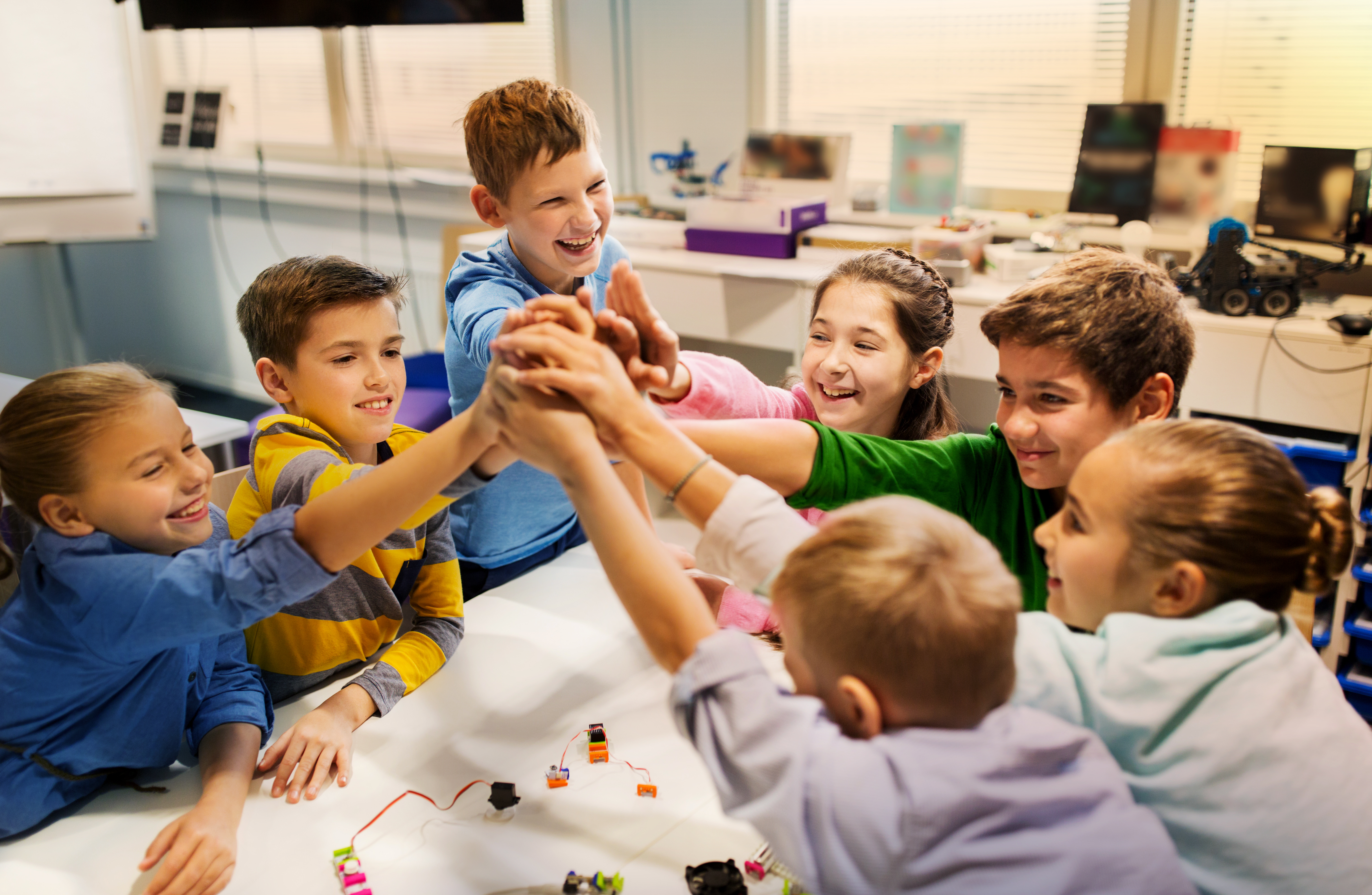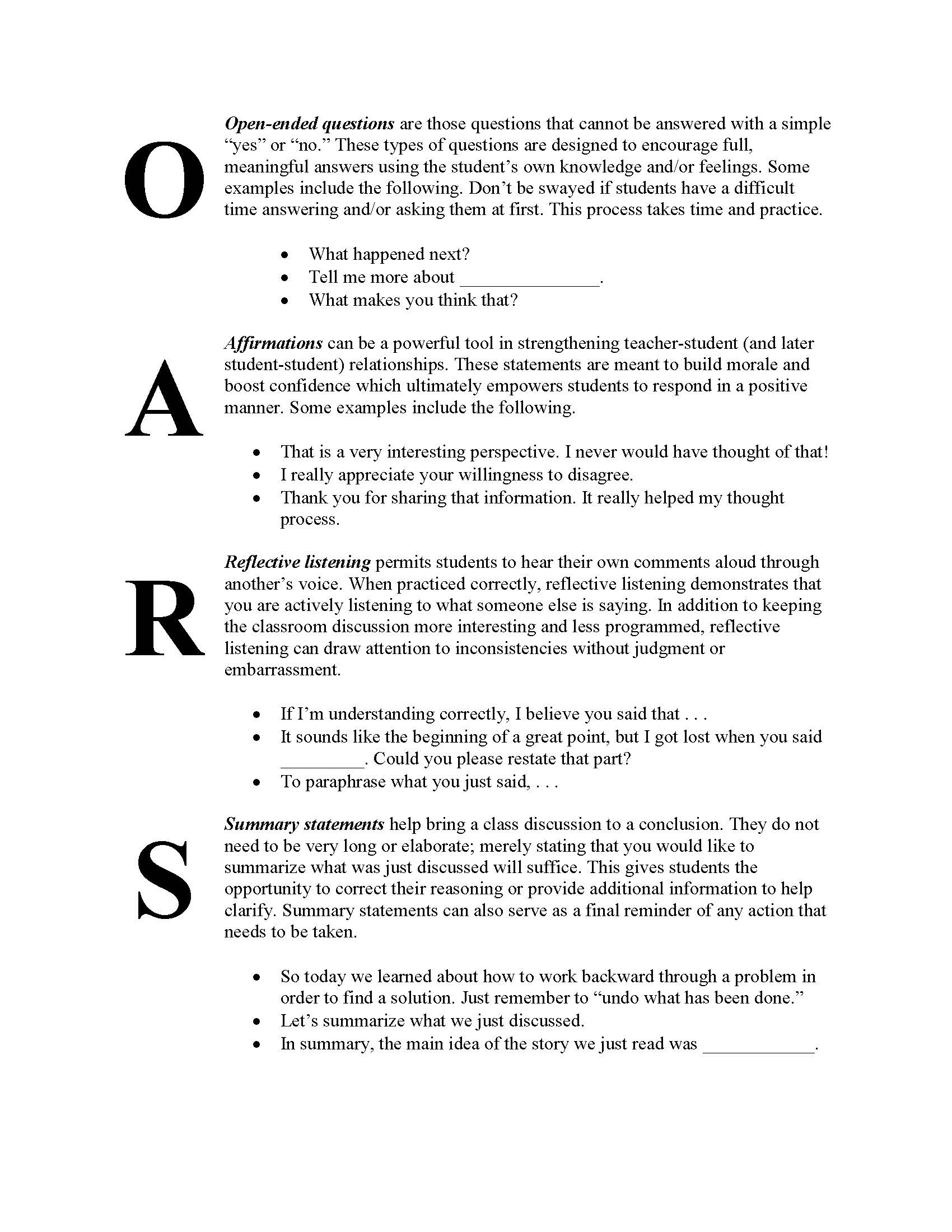Ten Teaching Practices that Support Social and Emotional Learning

PDI understands busy teachers. We know that as much as teachers want to support students’ mental health by incorporating social and emotional learning into their daily teaching, the demands may simply be too great. PDI can help. In this blog article, we share ten best teaching practices that support students’ social and emotional learning.
The Center on Great Teachers & Leaders is based at American Institutes for Research in Washington, D.C. and is funded through a cooperative agreement with the Office of Elementary and Secondary Education at the U.S. Department of Education. Its overall purpose is to support states in their efforts to ensure that all students have access to great teachers and leaders. They have identified ten teaching practices that promote students’ social and emotional skills. These practices are by no means exhaustive, but they are representative of instructional strategies that can be employed to support the five SEL competencies so that teachers are able to create those warm, supportive, and positive learning environments that are conducive to learning and emotional growth and intelligence.
- Student-Centered Discipline. Student-centered discipline refers to the various classroom management strategies that teachers use in their classrooms. These types of strategies need to be developmentally appropriate. Furthermore, they need to motivate students to want to do their absolute best, not just in terms of academics, but in terms of their behavior and emotional state as well. Discipline should not be teacher-directed nor punitive. Instead, teachers need to encourage an atmosphere in which students have a voice. This strategy helps connect the classroom rules to the overall “vision,” thus increasing the chance of greater student “buy-in.” This means that teachers need to be proactive in their management approach (as opposed to reactive) and those strategies need to be used consistently and fairly across the board. For example, when Jaime pushes Suzy out of the way in order to get to the front of the line, the consequences for his actions need to be logical and tied directly to the broken rule. So, instead of making Jaime miss recess, he should be required to line up at the very end of the line for the rest of the week. Consistently following logical consequences and routines, students learn how to regulate their own behavior which, as you already know, is paramount to problem-solving difficult situations in the future.
In order for student-centered discipline to be considered proactive, students must be allowed to engage in the construction of their classroom rules, procedures, and consequences. This helps in the creation of shared classroom norms and values, which ultimately leads to student “buy-in.”
 There was a time when allowing students to define the rules was a common occurrence. It is likely better for the teacher to give the students the rules and then allow them to help in the process of describing, analyzing, and understanding them. Start with your “must haves” and then, through thoughtful discussion, work with students to create a set of rules in their language. As an added bonus, this also helps students take ownership of the rules.
There was a time when allowing students to define the rules was a common occurrence. It is likely better for the teacher to give the students the rules and then allow them to help in the process of describing, analyzing, and understanding them. Start with your “must haves” and then, through thoughtful discussion, work with students to create a set of rules in their language. As an added bonus, this also helps students take ownership of the rules. - Teacher Language. Teacher language refers to the way in which teachers communicate with their students. This means that teachers need to praise and encourage students’ efforts and support their work. This can often be accomplished by individually communicating what each student has already accomplished and what needs to be done in order to complete the task. By providing this constructive feedback, the teacher is able to collaborate with his/her students in order to formulate a plan for improvement. The way in which teachers communicate this feedback should go beyond the traditional “nice job” to provide specific targeted constructive feedback. This type of communication is meant to encourage students to monitor and regulate their own behaviors so that they begin to take ownership and exhibit self-control. For example, when you notice that a student is becoming frustrated because s/he is “stuck,” try guiding him/her instead of merely giving him/her the answer. “Sasha, I sense that you are becoming frustrated when trying to decipher this paragraph. I understand that science vocabulary can be especially challenging. Think back to some of the strategies we learned about what to do when we come across a problematic situation. What are some things that you can do right now in order to regain some control (e.g., deep breaths, count to ten, walk away and try again later, etc.)?
 One of the most powerful motivational tools that teachers have in their arsenal is praise. However, praise for the sake of itself is meaningless; in order for it to properly work, it must be effective. And in order for praise to be effective, it must be positive, direct, personal, and specific. Students with low self-esteem often have negative feelings about themselves and their abilities. Using effective praise in the classroom helps build students’ self-esteem, and enhances their social skills to form the ability to praise one another.
One of the most powerful motivational tools that teachers have in their arsenal is praise. However, praise for the sake of itself is meaningless; in order for it to properly work, it must be effective. And in order for praise to be effective, it must be positive, direct, personal, and specific. Students with low self-esteem often have negative feelings about themselves and their abilities. Using effective praise in the classroom helps build students’ self-esteem, and enhances their social skills to form the ability to praise one another.
Teachers also need to pay attention to how they communicate their feedback. As stated above, this feedback needs to be specific, yet it needs to remain constructive. For example, if a teacher merely provides a student with the feedback of “nice first draft” on an essay about the early colonists, the student may be unaware that his/her essay can be improved. Instead, consider switching the teacher language to something more specific such as, “Sahil, I really like the introduction to your essay. As a reader, your hook drew me in immediately. However, I feel that you began to get lost with your reasoning. I think the piece would read better if you were able to add more details to your original claims. Try using the graphic organizer that we used last month to help with your organization.”
 There is a huge difference between the language of school and the language of home. Both school and work operate at a formal level (which uses precise word choice and syntax), as well as at a level which mixes formal and casual language. Teacher language should encourage the use of the more formal academic language. As a result, teachers must explicitly teach the language of school.
There is a huge difference between the language of school and the language of home. Both school and work operate at a formal level (which uses precise word choice and syntax), as well as at a level which mixes formal and casual language. Teacher language should encourage the use of the more formal academic language. As a result, teachers must explicitly teach the language of school. - Responsibility and Choice. This third practice allows students some amount of control over the work that is attempted and completed in the classroom. Allowing students to make responsible decisions regarding the scope of their work helps to create a democratic classroom environment which ultimately leads students to take ownership of their own learning.
 Responsibility and choice refer to the degree in which students are allowed to make responsible choices concerning their classroom work. This does NOT mean that students have complete control over their assignments, but rather it is the responsibility of the teacher to provide a structure in which voice and choice are encouraged and nurtured, within reason.
Responsibility and choice refer to the degree in which students are allowed to make responsible choices concerning their classroom work. This does NOT mean that students have complete control over their assignments, but rather it is the responsibility of the teacher to provide a structure in which voice and choice are encouraged and nurtured, within reason.
Some voice and choice can and should be incorporated into every student’s school day. Andrew Miller (2016), an instructional coach and education writer, shares the following about voice and choice. - What: Allow students choice in what they learn. This may be as simple as letting students choose the books they read or the topics they write about or research. Alternatively, it could be as complex as allowing students to set their own individual learning plans for entire units or areas of study.
- Who: Sometimes giving students choices on who they work with is a good strategy. Miller reminds us, however, that teachers must first teach students how to make good choices about with whom they work so that they are focused mostly on learning instead of camaraderie. He recommends teaching students to ask themselves the following questions before choosing their work partners.
- Who are the students with whom you believe you would work best? Why is that?
- What are your strengths?
- What are your areas of need?
- Who can you reasonably be expected to help on this project?
- Who can you ask to reasonably help you on this project?
- Why: Many students believe in their own infallibility, which makes it difficult for teachers to help them understand why they may need additional assistance from time to time. Thus, helping students make this determination can be an empowering learning opportunity for students and can also help them feel a sense of their own agency in learning.
- Where: Allowing students to choose where they work is one small concession that teachers can make because it helps students feel as if they have a great deal of choice. Many classrooms are using what is called flexible learning spaces. These types of learning spaces can have any configuration (regular desks, standing desks, pub-style tables, comfortable living room-like areas, or even on the floor). The goal of arranging the classroom in such a manner is that each student now has some choice concerning the most beneficial type of learning environment for him/herself.
- When: Students can exercise voice and choice in when they learn in very simple ways. This is especially true with skills-based tasks. For example, if students are being tasked with determining and understanding new vocabulary (CCSS.ELA-Literacy.L11-12.4), the teacher can allow his/her students to study and take an online assessment when they feel ready (within a reasonable time frame) as opposed to a teacher-assigned test day.
- Warmth and Support. This practice refers to the academic and social support that students receive from both their teachers and their peers. This means that the onus of creating a caring and supportive classroom lies clearly with the teacher. There are many strategies that teachers can do to help create such an atmosphere.
- Ask both academic and non-academic questions. For example, “Joe, I’m interested in how you arrived at that conclusion. Do you mind explaining your reasoning? Or “Stacy, I know you’ve been practicing extra hard on your solo violin piece. How did the concert go last night?”
- Follow up with students when they have a problem or concern. For instance, “Dustin, I can see that you are struggling with the new math concept. I’m available during your study period later today. How about I write you a pass so that you can stop by? We can work together to discover where you are getting stuck. That way I can help you understand in a different way.”
- Provide students with your own anecdotes and/or stories. This helps “humanize” you. For example, “Oh my gosh, I can’t tell you how many times I struggled with geometry when I was learning it! In fact, I still find it incredibly difficult to create those 3D shapes. It is so frustrating to understand the math behind all those formulas, only to be unable to ‘see’ it in my head. However, what I eventually learned is that there is no shame in admitting a weakness. Everybody has their own special talents which means that there is always somebody who can explain it in such a way as to make it more comprehensible.”
- Create a safe and supportive classroom environment so that students feel free to ask questions and take risks. This can be as simple as reinforcing the fact that mistakes help us learn, to supporting and nurturing a growth mindset.
- Foster a supportive and inclusive community. This requires teachers to guide students to understand that they are accepted and appreciated by both the teacher and their peers. This can be as simple as teaching students to say “Nice try!” in the face of adversity, or it can morph into the regular conveyance of classroom meetings. During this designated time, students come together in a circle to discuss and solve classroom problems and issues. These classroom meetings help students create a sense of belonging and trust. As an added benefit, students are able to use their social skills to solve problems and resolve conflicts.
- Cooperative Learning. Cooperation means working together to accomplish a shared goal(s). When used in conjunction with teaching, cooperative learning is a successful teaching strategy in which teachers place students into small mixed-ability groups. There, through the use of a variety of learning activities, the students work together to improve their understanding of a topic under study. This is more than group work; students must actively interact with their peers in a meaningful way for the benefit of all members. In order for cooperative learning to have an impact on social and emotional learning, students must be able to collaboratively process how they work together and monitor their progress toward that goal. An ideal way to introduce students to the concept of working together cooperatively is through the use of cooperative learning games. These types of games help students learn to work together properly absent any academic learning goals. These games help students think critically and cooperatively, as they work together to accomplish a specific team goal. Since the object is for all members to succeed, cooperative learning games take competitiveness out of the equation. The following links provide some great resources for cooperative learning games.
- Classroom Discussions. During class discussions, teachers must make a concerted effort to ask more open-ended questions that have multiple solutions and which require students to elaborate on their own thinking, as well as the reasoning of their peers. When employed effectively, classroom discussions take on their own life; each new thought is built upon those that came before and most of the dialogue is student-driven. To make this happen, teachers need to work on students’ communication skills. Students need to be able to actively listen to the discussion so that they can siphon out the main points and relevant details. Of course, teachers must also make sure that students have the necessary content knowledge for without it, they will be unable to effectively participate in these meaningful classroom discussions. The following OARS strategy (open-ended questions, affirmations, reflective listening, and summary statements) is useful in teaching students how to hone in on any important and essential tasks and information.

- Self-Reflection and Self-Assessment. It is imperative for teachers to engage students in the tasks of self-reflection and self-assessment. These two practices require students to actively think about their work which, during the course of both processes, challenges them to engage in most, if not all, of the five SEL competencies. As students actively reflect and assess their own performances, they become acutely aware of how much a role they played in the task’s success (or failure) and how their actions related to others. For example, a kindergartener might be given a checklist to assess his/her performance at a specific reading station. As this same student checks off the items on the checklist, s/he is forced to think about his/her role in the success or failure of the station task. Was the task completed to the satisfaction of all involved parties? What specific role did s/he play in reaching the goal? Did s/he perform in such a way as to help or hinder the task at hand? What specifically could s/he do in the future to make the station experience even better? Similarly, a student at the middle school level might be given an exit ticket with the same types of questions. Each question is designed to engage students in the process of metacognition, a very important component of social-emotional learning. It is the teacher’s responsibility to develop goals and clear-cut priorities, and precisely communicate these to students.
- Balanced Instruction. In order for teachers to successfully implement balanced instruction, they must be able to maintain an appropriate balance between direct instruction and active learning, as well as individual and collaborative learning. By effectively balancing these different types of instruction and learning environments, students are given multiple opportunities to experience and engage with the topic.
One such example of active instruction is project-based learning. Project-based learning, or PBL, is a teaching method in which students gain knowledge and skills by actively engaging in hands-on investigations that are authentic, complex, and based on real-world applications. During the course of a PBL-based project, teachers can lecture, but students work individually and collaboratively to research a real-world problem and develop a solution using evidence to support the claim. This solution is then presented using a multimedia approach. By working cooperatively for a common end goal, students form caring relationships and become intrinsically motivated in their desire for meaning and mastery.
- Academic Press and Expectations. Teachers must have the belief that all students can and will succeed. Academic press refers to how the teacher goes about implementing meaningful and challenging tasks as s/he maintains his/her high standards and expectations. In order to succeed, students need to sense that teachers believe in them and want to see them succeed. Once students are aware of these expectations, they are more likely to exert effort toward that goal.
Most teachers are familiar with the term rigor, a concept made famous with the introduction of the Common Core State Standards. In terms of teaching, rigor refers to the deep, authentic command of concepts, not making them harder or introducing them earlier. In terms of education, rigor can be defined as schoolwork that is intellectually challenging and engaging. It connotes high expectations for growth, critical thinking, and learning. The best thing teachers can do to maintain a rigorous classroom is to differentiate the content based on students’ needs. Once students are given the opportunity to “attack” the content from a place of understanding, they ultimately respond in a positive manner.
- Competence Building — Modeling, Practicing, Feedback, Coaching. Students become competent with the social and emotional skills when their teachers systematically embed these skills into the curriculum and typical instructional cycle — statements of learning objectives, introduction and modeling, guided group and individual practice, and conclusion/reflection. As long as the SEL skills are integrated into the lesson, each part of the instructional cycle helps reinforce the various SEL competencies. This means that throughout the lesson, teachers should model prosocial behavior, which is any action intended to help others. Prosocial behavior revolves around the rights, feelings, and welfare of others, and includes empathy, concern for others, and behaving in ways that help or benefit other people. For example, teachers should teach students how to politely and respectfully disagree. The actual language of respectful disagreement is incredibly important, and many students just don’t have the words to express themselves. Consider creating a list of sentence starters to help students in this endeavor.
- I want to better understand your point of view. Can you explain to me why you feel this way?
- I see your point. However, . . .
- I disagree with the point about . . .
- I understand what you’re saying, but I can’t find the evidence to support your reasoning.
- I believe there is an error in . . .
- I can tell this is an issue that you’re passionate about. Could you please tell me how you arrived at this viewpoint?
In addition, teachers need to seize every SEL-related teachable moment. If, for example, there is a conflict during a cooperative group activity, the teacher should guide students through problem-solving and conflict resolution strategies. “Peter, I know that you are excited to see what will happen during this experiment, but it is important that everyone gets a turn to do his/her job because if no one participates, then no one learns. Let’s remember that in the future, everyone needs to stick to his/her assigned job, okay? Of course, if someone is stuck and asks for help, you are more than welcome to offer your help.” These teachable moments abound in any classroom at any grade level, and can cover such topics as sharing, hurt feelings, giving compliments, taking turns, and apologizing, just to name a few.
It’s Just Good Practice
The ten teaching practices referenced above can and should be used in every classroom and at every grade level in order to promote safety, overall well-being, social-emotional competencies, and academic learning. As stated earlier, the good news is that many of these teaching practices are already being implemented by teachers across the globe. Once teachers begin to think of these commonly-used practices in terms of SEL, teaching and learning become much more enjoyable for all participants.
Are you curious? Want to learn more?
To learn more about social and emotional learning, visit the Professional Development Institute (PDI) website or go directly to comprehensive list of courses for Social and Emotional Learning training. PDI has been offering quality online professional development courses to K-12 educators for over 27 years and provided training to over 345,000 teachers across the globe. We specialize in offering quality, affordable university-approved online courses that focus on the most relevant topics in education while providing practical strategies that can be implemented in the classroom immediately. All PDI courses are at the graduate-level, instructor-led, and are conducted entirely online. University credit is available through University of California Division of Extended Studies. PDI offers an extensive catalog of online courses for teachers on topics that are the most critical in today’s classrooms.
Article References
Miller, A. (2016). “Voice and Choice: It’s More Than Just ‘What.’” Retrieved 6 Dec. 2017 from https://www.edutopia.org/blog/voice-and-choice-more-than-what-andrew-miller
Categories: SEL, social and emotional learning

View PDI's Catalog of Courses
Check out a list of all PDI graduate-level online courses or sort by grade level or subject area.

Register Now!
Quick access to register for PDI's online courses using our secure system.

Learn More about PDI
Find out how to reach PDI and get answers to any questions you may have.
